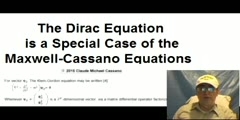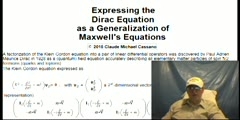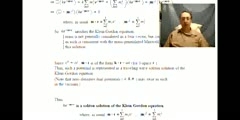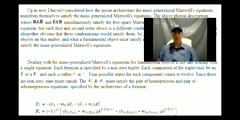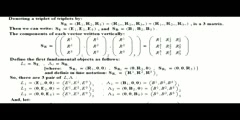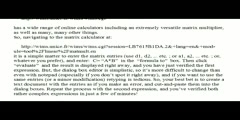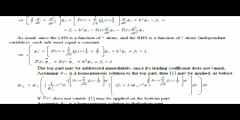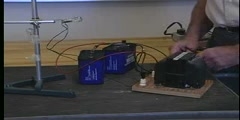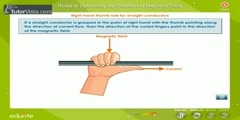A Helmholtzian operator and electromagnetic-nuclear field
A Helmholtzian operator is a linear second order partial differential operator, typically in four independant variables; a generalization of the d'Alembertian operator where it's additional constant vanishes. When the time-independant version (in three independent (space) variables acting on a function or vector vanishes, the resulting equation is called the Helmholtz's equation. In four dimensions this equation is referred to as the Klein-Gordon equation (with imaginary constant) . The focus of this tutorial is to demonstrate that when acting on a four-vector doublet, the Helmholtzian operator may be factored into two 4x4 differential matrices in two distinct ways, giveing a matrix product definition for the Helmholtzian operator. (The scalar Klein-Gordon equation is a special case of this four-vector version, where there are three restrictions on the four components of the potential A , leaving the single independant function.) This is an incredibly compact way of writing both the Klein-Gordon equation and generalized Maxwell's equations of an electromagnetic-nuclear field. The above process may be generalized for any dimension power of two, thus generalizing the Helmholtzian (and, thus the d'Alembertian) as well as the generalized Maxwell's equations to any dimension power of two. http://wims.unice.fr/wims/wims.cgi http://wims.unice.fr/wims/wims.cgi?session=LB7615B1DA.2&+lang=en&+module=tool%2Flinear%2Fmatmult.en https://sites.google.com/site/themathematicalnatureofreality/ https://sites.google.com/site/themathematicalnatureofreality/config/pagetemplates/books
Video is embedded from external source so embedding is not available.
Video is embedded from external source so download is not available.
Channels: Physics (General) Mathematics
Tags: electromagnetism nuclear field Maxwell's equations Klein-Gordon equation Helmholtz equation math physics
Uploaded by: cloudmichael ( Send Message ) on 18-03-2011.
Duration: 5m 39s
